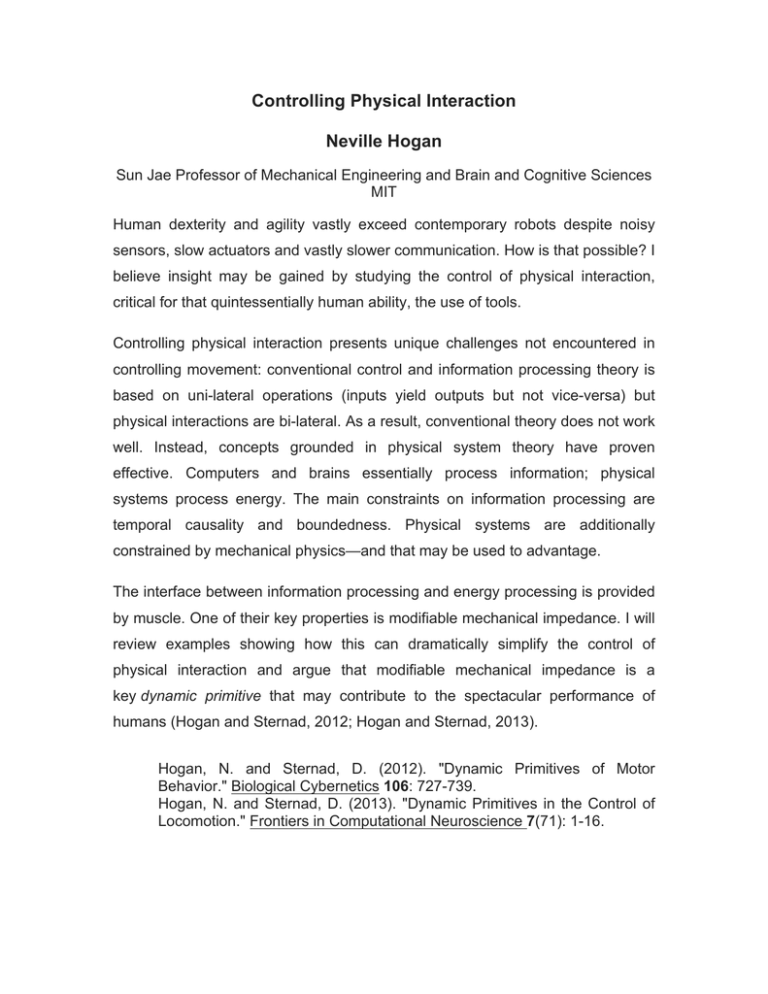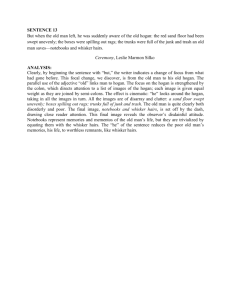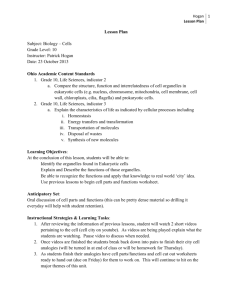Controlling Physical Interaction Neville Hogan
advertisement

Controlling Physical Interaction Neville Hogan Sun Jae Professor of Mechanical Engineering and Brain and Cognitive Sciences MIT Human dexterity and agility vastly exceed contemporary robots despite noisy sensors, slow actuators and vastly slower communication. How is that possible? I believe insight may be gained by studying the control of physical interaction, critical for that quintessentially human ability, the use of tools. Controlling physical interaction presents unique challenges not encountered in controlling movement: conventional control and information processing theory is based on uni-lateral operations (inputs yield outputs but not vice-versa) but physical interactions are bi-lateral. As a result, conventional theory does not work well. Instead, concepts grounded in physical system theory have proven effective. Computers and brains essentially process information; physical systems process energy. The main constraints on information processing are temporal causality and boundedness. Physical systems are additionally constrained by mechanical physics—and that may be used to advantage. The interface between information processing and energy processing is provided by muscle. One of their key properties is modifiable mechanical impedance. I will review examples showing how this can dramatically simplify the control of physical interaction and argue that modifiable mechanical impedance is a key dynamic primitive that may contribute to the spectacular performance of humans (Hogan and Sternad, 2012; Hogan and Sternad, 2013). Hogan, N. and Sternad, D. (2012). "Dynamic Primitives of Motor Behavior." Biological Cybernetics 106: 727-739. Hogan, N. and Sternad, D. (2013). "Dynamic Primitives in the Control of Locomotion." Frontiers in Computational Neuroscience 7(71): 1-16.



